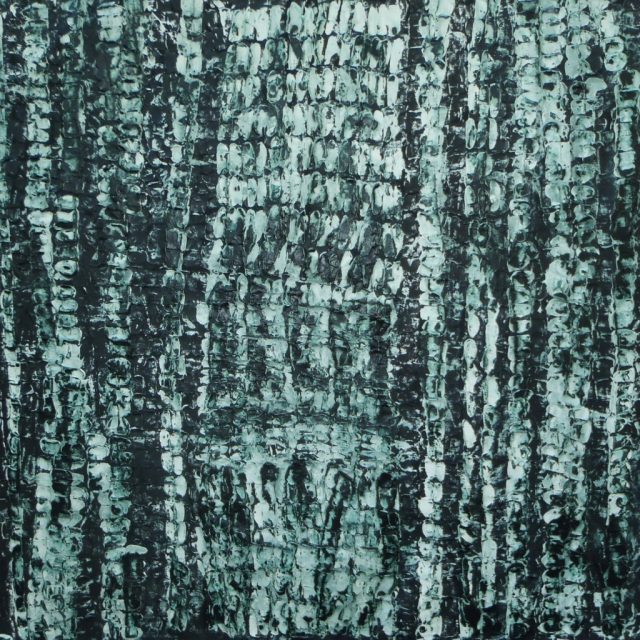A Culture Crouched In Skin

My last year’s visit to the Sungei Buloh Wetland Reserve had the highlight of highlights: I spotted my 1st saltwater crocodile, after living in Singapore for nearly 5 decades. Yes, such a sighting is indeed fairly rare: the majority of these creatures had been hunted to near extinction during the colonial period of the island’s history.
The young reptile in question was sunning itself on the riverbank, totally oblivious to all onlookers on the wooden bridge spanning across the streaming waters, probably because we were all taking turns to peer at it through a single high powered telescope. Even then, we could only just make out the markings on its sunny yellow skin. Lost upon us too was its very texture.
Imagine my delight then when I chanced upon Joshua Bonson’s current solo exhibition in Singapore: “Skins” showcases its scaly cover up close and personal. And I mean in such close proximity that you can not only make out the individual scales, the saltwater crocodile’s skin has been cleverly texturally rendered for close scrutiny as well.
He shows its armoured skin by cleverly building up the serrations of paint – having applied layer by layer by hand or directly from the tube as he ‘want(s) the viewer(s) to feel the presence of the reptile, run their hands across its skin’.
This opportunity to gain some semblance of such knowledge out strips the importance placed on the fact that Bronson draws inspiration from reptiles that thrive in northern Australia for they share similar taxonomic and characteristic traits with the ones living in our own mangroves.
Yet what is significantly more crucial is why this Australian emerging artist is able to so succinctly capture the very essence of the creature’s natural casing, even though he has evolved a painterly style that is largely monochromatic and abstractly expressionistic.
In distinctive essentials, the scales of the salt water crocodile are his own personal totem and his up close inspection of this aspect of the animal can also be interpreted as a landscape seen from a great distance and up close of rock and sand – a terrain harvested from the cross pollination of the Northern Territory down under, where he lives, and the Torres Strait, where he roots his heritage.
As such, Bonson’s close up artistic investigation of its scaly coat then becomes the internal sleuthing he has done to put in place the affiliations that define his very own skin as he and his Indigenous peers go about finding their place in modern Australian life.
Such an adjustment is crucial as the people who inhabit the Torres Strait Islands, which lie between Australia and the Melanesian island of New Guinea, are by tradition seafarers and agriculturists who supplement their food supplies through hunting and gathering. Theirs is very much a subsistence lifestyle – 1 that is clearly extremely divergent from the career path Bronson has chosen to take.
At the same time, by getting us up close to the salt water crocodile’s skin, he enables us to ‘know its strength, and also see the country from where it came, where (he) come(s) from’ too: ‘culture is an important part of (his) life and plays an equally important part in (his) art. The Bonson family’s culture has been lost over the years, and through (his) artwork… he (tries) to regain it, to trace it back and find it again’.
All he knew when he was growing up was that his ‘great grandmother was from Badu in the Torres Strait Islands and her eldest son is (his) grandfather… (who) is the inspiration for (his) work. (This old man) says everything is connected, the land, the water and us… (so) like the crocodile, (Bronson is also) saltwater people with an ancient lineage’.
Dwell in Bonson’s cultural mind space as you luxuriate in an artistic close encounter with the reptilian kind before his “Skins” solo exhibition comes to an end on 25 October this year.
The show is at ReDot Fine Art Gallery, Tanjong Pagar Distripark, Artspace@Helutrans, 39 Keppel Road, Gallery 9, #01-05, Singapore 089065.
 Singart
Singart
